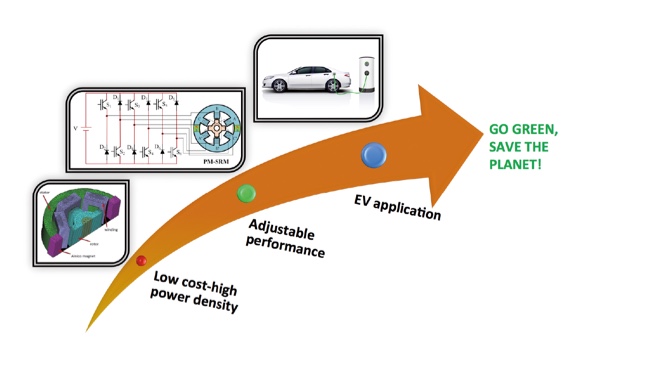Fuat Kucuk
Junior Associate Professor, M.Sc. in Electrical Engineering, Ph.D. in Electrical and Communication Engineering
- fuat.kucuk

- Website
- https://researchmap.jp/kucukf
- Areas of Research
- Electric Motor Design & Control, Electromagnetic Actuators, Power Electronic Circuits, Renewable Energy Conversion Systems, Electric Vehicles
- Profile
- Research
-
Dr. Fuat Kucuk received his B.Sc. and M.Sc. degrees in Electrical Engineering from Istanbul Technical University (ITU), Turkey, in 2000 and 2003, respectively. He worked as a research assistant for five years at the same institution. After receiving his Ph.D. in Electrical and Communication Engineering from Tohoku University in 2010, he remained there as a post-doctoral researcher in a NEDO project for a year. In 2011, Dr. Kucuk returned to Istanbul Technical University and worked as an assistant professor in Electrical Engineering for six years, giving courses on Electromechanical Energy Conversion, Electrical Machines, Power Electronics Circuits, Digital Circuits and Programming Languages (C and Python). From 2017 to 2019, he worked as a guest researcher and then a program-specific researcher at Kyoto University. Dr. Kucuk joined the Faculty of Engineering at Kyoto University of Advanced Science in 2019 as a junior associate professor while continuing cooperative research activities at Kyoto University.
Dr. Kucuk’s main research interests are design and control of special electrical machines and power electronic circuits, and wind energy conversion systems. In his earlier research projects, he introduced a soft computing method for quantifying the power quality of a grid according to load types. After earning his Ph.D., Dr. Kucuk focused on designing low-cost, high-efficiency generators for wind energy conversion systems. Recently, he proposed a Variable Magnet Switched Reluctance Motor (VM-SRM) drive for EVs characterized by adjustable performance and low-cost.
Dr. Kucuk is currently a member of the IEEE, and has served as a technical committee member in conferences and as an editor and reviewer of journal papers.
Dr. Kucuk is fluent in Japanese and is looking forward to meeting students who are eager to work in a team and contribute to science and technology.
-
The Future Will Be Shaped by Electric Motors
When thinking about power generation, many people will immediately think of the motor. We all know that a motor is the primary component that makes a car move through the internal combustion engine. However, motors have many other applications: in the example of the car alone, there are at least an additional 80 more motors. Indeed, electric motors already make up more than 30% of our total energy consumption, and this percentage will increase even further. At the same time, many countries are facing an energy crisis, and are looking for more sustainable ways to generate power. Dr. Kucuk specializes in the field of motors and knows how crucially important they may be in solving many of our energy issues.
Coming from a background of control engineering, Dr. Kucuk’s primary research interest is getting the highest efficiency out of electric motors. Specifically, he is looking at the control and design of motors, as well as the ever-important magnet. Inside a motor, the magnet plays a significant role in the increase or decrease of motor performance as a whole. Today, electric motors are in almost every device and appliance around us, meaning that achieving even a small uptick in efficiency can result in a significant reduction in energy consumption. One of the current most popular research fields is electric vehicles (EVs). In EVs, one of the major challenges in improving their commercial viability is the need to decrease the price of the motor, far and away their most expensive part. Here, Dr. Kucuk is looking at alternatives to the neodymium magnets, which are the most widely used magnets for this application in the world. However, these magnets are primarily concentrated in the Chinese market. This makes it difficult and costly to import for other countries primarily producing EVs.

Dr. Kucuk wants to take this research even further: the field of electric motors is more than 100 years old, and has seen rapid improvements such as the emergence of power electronics and semiconductors. However, he feels that it has only begun to truly emerge as the primary field in energy. Simply taking the current numbers, when electric motors account for more than 30% of the world’s energy consumption, achieving even a 1% increase in efficiency leads to profound environmental benefits, including for instance the broad-ranging stoppage of building new power plants. Looking at it in these simple terms, the wide-reaching implications of Dr. Kucuk’s research understate its importance.